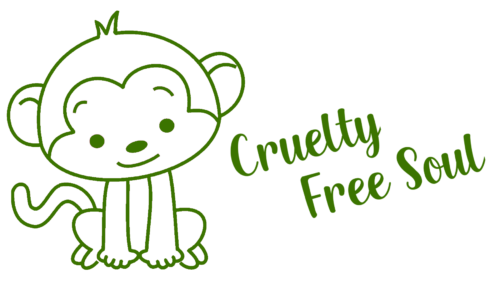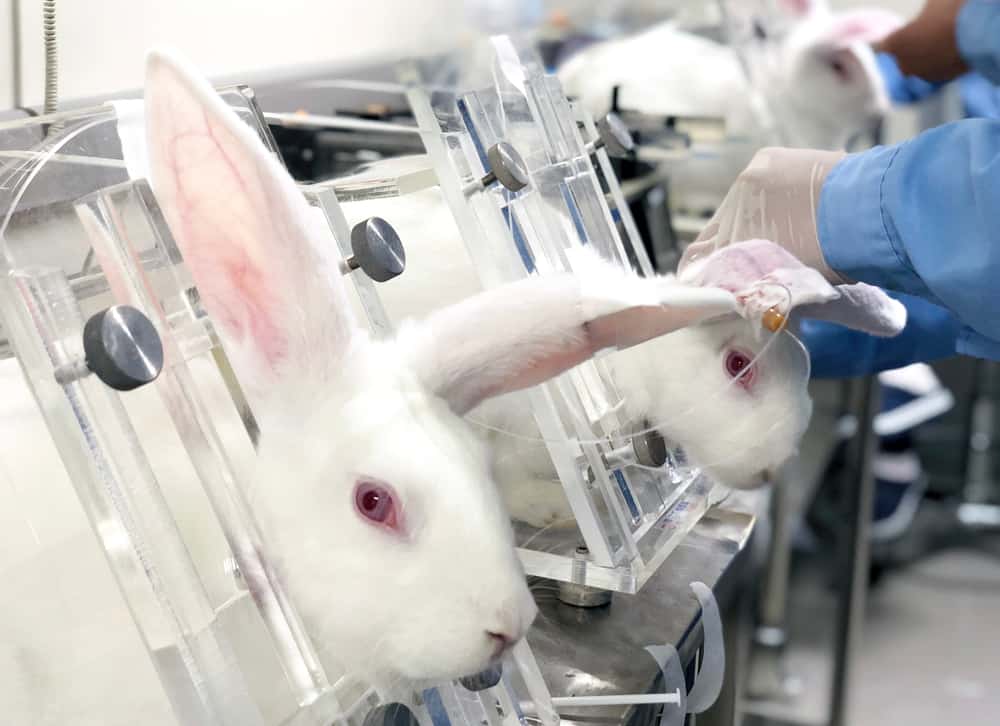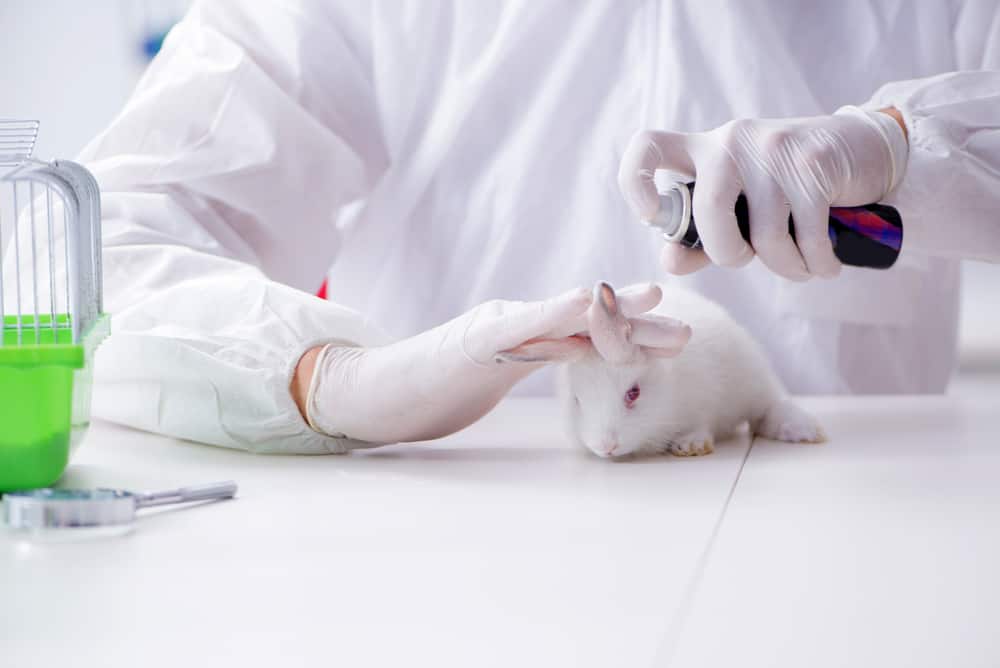The rabbit has become an iconic symbol that cruelty-free organizations have used for decades. Products branded with a bunny usually imply safe and humane testing conditions. But while cruelty-free labeling has come a long way, rabbits are still used for testing all the time. These tests are often as cruel and inhumane as they were a half-century ago.
Alongside other small animals like guinea pigs, mice, and rats – rabbits used for animal testing have endured untold cruelty. Researchers use rabbits to test products in the healthcare and beauty industries.
And while there have been monumental changes to animal welfare laws – rabbits still suffer at the hands of people. Here are some scary facts about animal testing on rabbits.
Rabbits are Used for the Draize Eye Irritancy Test
Rabbits are one of the most popular animal for cosmetic testing. A common product test done is the Draize Eye Irritancy Test, which was developed in the 1940s to see if chemicals in products affect the eyes.
The Draize test is commonly used to test shampoos, soaps and body wash. Basically, if there is a chance a product can get into your eyes – researchers will use a Draize test.
Rabbits are held down with restraints, usually across their entire bodies. From here, chemicals are dripped into their eyes, and the results are recorded. The restraints keep any animal from pawing at their eyes, leaving them only to writhe in pain.
Now imagine having a severe response to shampoo getting in your eyes and burning with no way of alleviating the pain. These tests are incredibly inhumane and make rabbits go through agony.
Rabbits Are Not Safe After Testing Finishes
One thing that a lot of people don’t understand about animal testing is the aftermath. While animal cruelty is certainly a huge issue, what happens after the tests are done is even more heartbreaking.
When the animals suffering through the pain of a cosmetic test – they are usually killed and discarded. This is standard procedure for most labs, so many rabbits lives’ are only for suffering and death.
Often, rabbits are killed after:
While you would hope this process is done humanely – often regulations are skirted, which means that they experience untold pain and suffering even at the end of their lives.
Rabbits are Used for Skin Corrosion Tests
Unfortunately, Draize tests don’t stop at just the eyes. Researchers use rabbits for skin corrosion tests as well. These are done because it’s easy to restrain the animals in a similar way to the eye tests.
From here, a portion of their back is shaved and the researcher will place a chemical on the exposed skin while recording what happens. Much like the Draize tests, the rabbit will have no recourse to move around to stop the pain.
These tests can cause:
Tick Research Still Relies on Rabbit Testing
What’s worse is that although it's common to associate cosmetic testing with rabbits – it extends far beyond that. Cosmetics aside – rabbits are used for all kinds of testing.
One series of research tests involve ticks. These ticks need to be researched, but first, they need to be raised. To do this, researchers will restrain the rabbit and shave the underside of the belly. Workers will then attach dozens of ticks to the exposed skin.
The ticks are left to gorge on the rabbit’s blood for several days. After about a week, they are removed. Then, another round of ticks is administered. After it is all said and done, the rabbit is euthanized.
Rabbits are Denied Basic Accommodations
There are standards of practice when it comes to rabbit husbandry and welfare. Often, these regulations cover only the bare minimum of what it means to be kept alive. They manage things like proper water intake and temperature regulation. But they never address the other aspects of rabbit life that add quality to the animal's existence.
From a humane and environmental perspective, rabbits need the following things to be healthy:
When it comes to rabbits in a testing setting, rarely, if ever, are these conditions taken into account. More often than not, rabbits are treated merely as testing tools and not the sensitive animals they are.
Rabbits are Used Because of Their Gentle Demeanor
One of the most unsettling facts about rabbit testing is why they are so popular in the first place. If you have ever met a pet rabbit, the first thing you might notice is the animal’s timid and shy nature. They are soft, sweet, and often can be pretty affectionate.
They are used so frequently for lab tests because of their timid nature. In other words, they are taken advantage of because they are easy to handle, just like mice, guinea pigs, and other small creatures.
If rabbits were more aggressive, like a weasel or fox, they might have been left alone. Instead, they are killed en masse for the sake of lipstick, deodorant, and body wash.
There Are Alternatives to Popular Rabbit Testing Methods
Rabbit testing is still very popular. In 2018 there were around 120,000 rabbits in research facilities in the US alone. What makes this so unsettling is that there are alternative testing methods that don’t directly harm rabbits.
Many countries around the world are banning any form of animal testing for cosmetics because it is simply unnecessary. Not only is it cruel to the animals, but the results don’t guarantee that humans will respond in the same way. In fact cruelty-free products are considered safer.
Unfortunately, the US is not one of the countries that have banned animal testing on cosmetics. You can find out more here: Everything You Need to Know About US Animal Testing Regulations.
That being said, there are alternatives to both the Draize Eye Irritancy Test and the Skin Corrosion Test. They might not necessarily be free of all harm, but they are certainly better than doing cruel experiments on animals so that they endure long and painful deaths.
They include:
Additionally, companies can always opt not to include chemicals that could be corrosive or irritating.
There are thousands of such ingredients available that have long histories of use. If cruelty-free companies can handle it, others can too.
A Particular Breed of Rabbit is Used for Testing
Did you know that there are over 300 different breeds of rabbits in the world? But, when it comes to testing, there is a favorite: The New Zealand White. These rabbits were first bred in the 1920s and have since become the most famous rabbit used in research. Historically, they have been used for things like antibody research and cosmetics testing.
New Zealand White rabbits are usually larger than most breeds, and they are recognized by their snow-white fur and calmer demeanor than other rabbits.
Most Rabbit Testing Involves Pain and Distress
There is no denying the purpose of product testing. We want to ensure that the people who use the products in the future are safe from harm. In the US, it is even legally required to perform specific tests to ensure things are safe.
These tests can be related to toxicity and safety testing for things such as:
In most of these tests, the rabbits experience untold amounts of pain and suffering. In fact, in 2018 alone, it was found that around 43% of all rabbits used for testing purposes had to undergo painful and distressful procedures.
Final note
Testing on rabbits is an unfortunate part of our current product testing producers. Rabbits undergo tests for eye and skin irritants and are often subject to pain and discomfort. Additionally, alternative testing exists but is often underutilized. Rabbits are timid, shy, and peaceful creatures, so why are we still subjecting them to cruel and inhumane testing.
It is possible to take a stand against using rabbits, or any other animals for that matter, for animal testing by choosing cruelty-free products the next time you go shopping.
As it stands, the European Union no longer allows any animal testing for cosmetic testing – but countries like America still have a long way to go. Until the demand for cruelty-free products rises, companies will continue to abuse animals if it benefits their pocket.
To end off, we want to share an incredible short film that the Humane Society International released this year, as part of a global campaign to ban animal testing. This animated film has a star-studded cast including Ricky Gervais, Zac Efron and Olivia Munn. Take a look and share using #Save Ralph:


